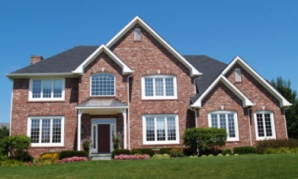 The National Center for Healthy Housing (NCHH) and the American Public Health Association (APHA) have released a new National Healthy Housing Standard targeting the nation’s 100 million existing homes – single family, multifamily, rental and owner occupied. The Standard can be adopted as a regulation by government agencies and as a voluntary best practice by any property owner.
The National Center for Healthy Housing (NCHH) and the American Public Health Association (APHA) have released a new National Healthy Housing Standard targeting the nation’s 100 million existing homes – single family, multifamily, rental and owner occupied. The Standard can be adopted as a regulation by government agencies and as a voluntary best practice by any property owner.
In September 2013, NCHH found that 35 million (or 40 percent) of metropolitan homes in the U.S. have one or more health and safety hazards as reported in The State of Healthy Housing, a comprehensive study of housing conditions in 46 metropolitan areas of the nation. That study draws on data from the American Housing Survey, which found that approximately 6.3 million housing units are considered to be substandard—a statistic that has remained relatively static for over a decade.
Consequences are dire
“The consequences of not dealing with substandard housing are dire in both human wellbeing and cost,” said Georges Benjamin, MD, FACP, executive director of the American Public Health Association. “In most places, homes are safe and healthful havens, largely due to the protective regulations put into place a century ago. Yet, in many communities, housing regulations have neither kept pace with the way Americans interact with their homes nor with the modern diseases that plague society—including chronic diseases such as asthma and depression, cancer, and certain injuries.”
Between 20 and 30 percent of asthma cases are linked to home environmental conditions. About 21,000 lung cancer deaths result from radon in homes. Over 24 million homes that have lead-based paint hazards put children at risk of the irreversible neurologic effects of childhood lead poisoning. In addition, home injuries are the leading causes of death for young children and put 6 million adults over 65 in hospitals and nursing homes due to falls that are too often preventable.
NCHH and APHA based the Standard on evidence from the fields of environmental public health, safety, building science, engineering, and indoor environmental quality. The National Committee on Housing and Health and a Technical Review Work Group, comprised of leading international experts and professionals, oversaw the development of the Standard.
Saving lives, shrinking disparities
“We hope the Standard will inspire action and cross sector collaboration. Most of all, we hope through the implementation of this Standard we will save lives, shrink disparities, and ensure our nation’s homes are the safe havens they were meant to be,” said Henry Cisneros who served on the National Committee for Housing and Health. Cisneros was the 10th Secretary for HUD and is the Chairman of CityView, an institutional investment firm focused on urban real estate.
The Technical Review Work Group considered more than 300 public comments from health and housing practitioners and advocates representing 50 different organizations, and accepted many of their insights on the Standard.
“We are calling on federal, state, and local agencies to seek the adoption of this health-based standard to ensure that every person in America has access to a safe and healthy home,” said Dr. Thomas Vernon, who chairs NCHH’s Board of Directors, and also chaired the National Committee on Housing and Health.
Focus is on maintenance
The Standard differs from a new construction or rehab standard in that it governs the maintenance and condition of occupied dwellings.
“These new standards will make it easier to assure local policy can be created to support healthy housing,” said Dr. David Fleming, Director and Health Officer for Public Health - Seattle & King County. "Housing is a significant determinant of health and it is important that our housing stock be built and maintained to create the healthiest living conditions possible.”
To review the full document, please visit: www.nchh.org/Policy/NationalHealthyHousingStandard.aspx
About the National Center for Healthy Housing
The National Center for Healthy Housing is the preeminent national nonprofit dedicated to creating safe and healthy housing for America’s families. It has trained over 35,000 individuals in lead-safe and healthy housing practices since 2005, and its research provides the scientific basis for major federal policies and programs. NCHH develops scientifically valid and practical strategies to make homes safe from hazards and to protect low-income families at highest risk. You can follow NCHH on Twitter @nchh or become a fan on Facebook at Facebook.com/HealthyHousing.
About the American Public Health Association
APHA champions the health of all people and all communities. We strengthen the profession of public health, share the latest research and information, promote best practices and advocate for public health issues and policies grounded in research. We are the only organization that combines a 140-plus year perspective, a broad-based member community and the ability to influence federal policy to improve the public’s health. For more about APHA, visit www.apha.org.






